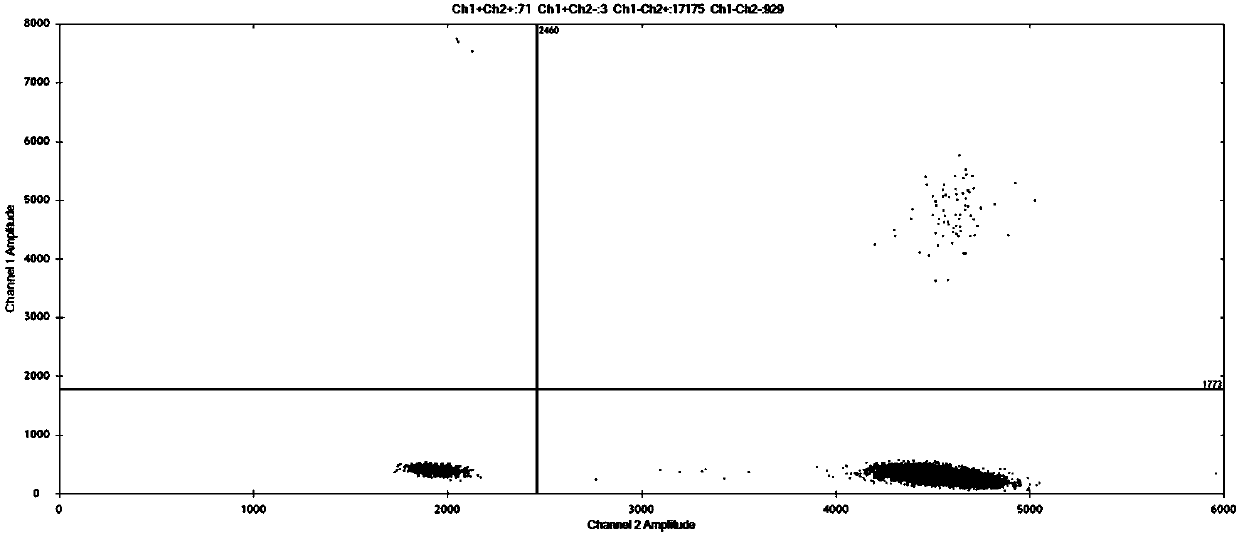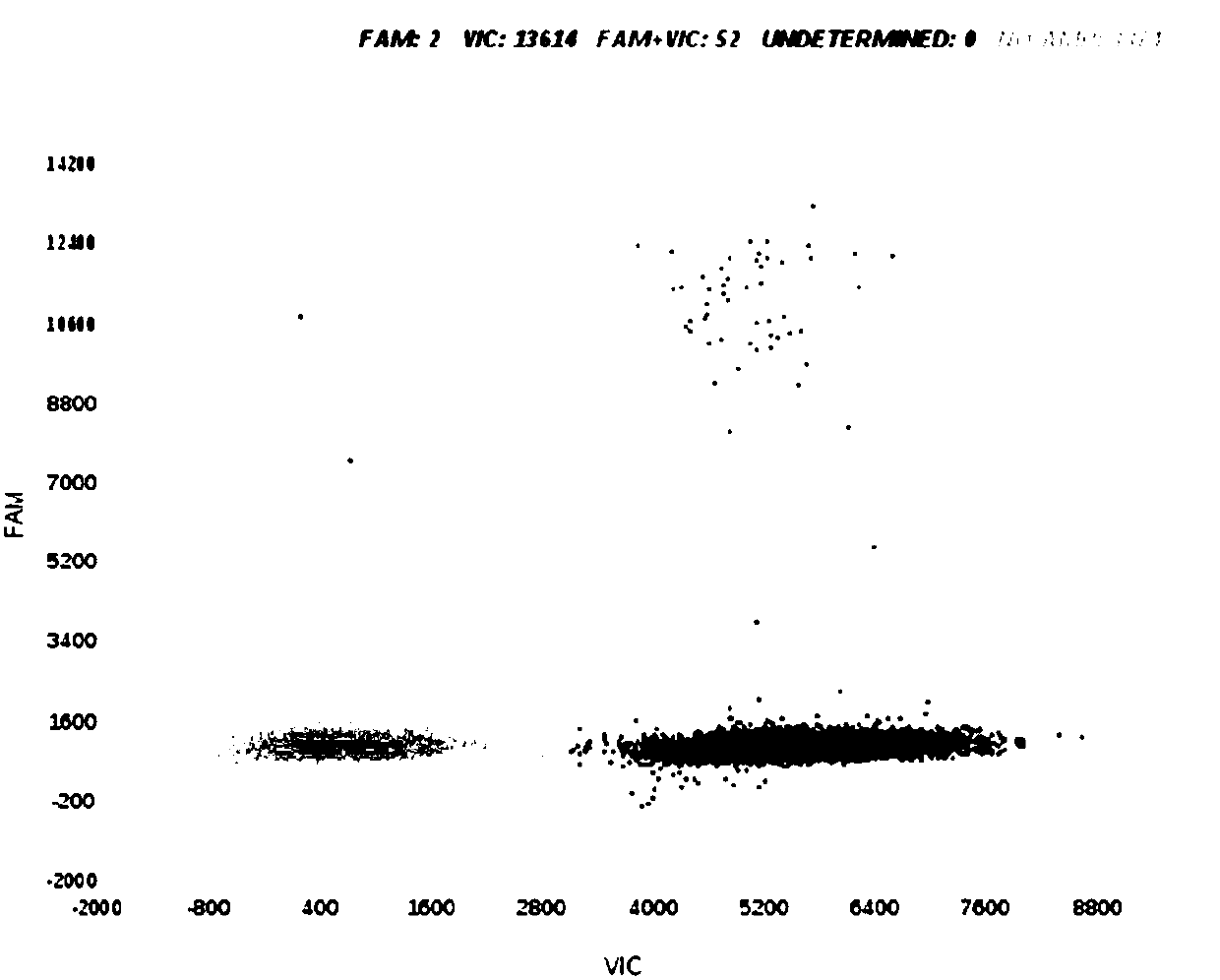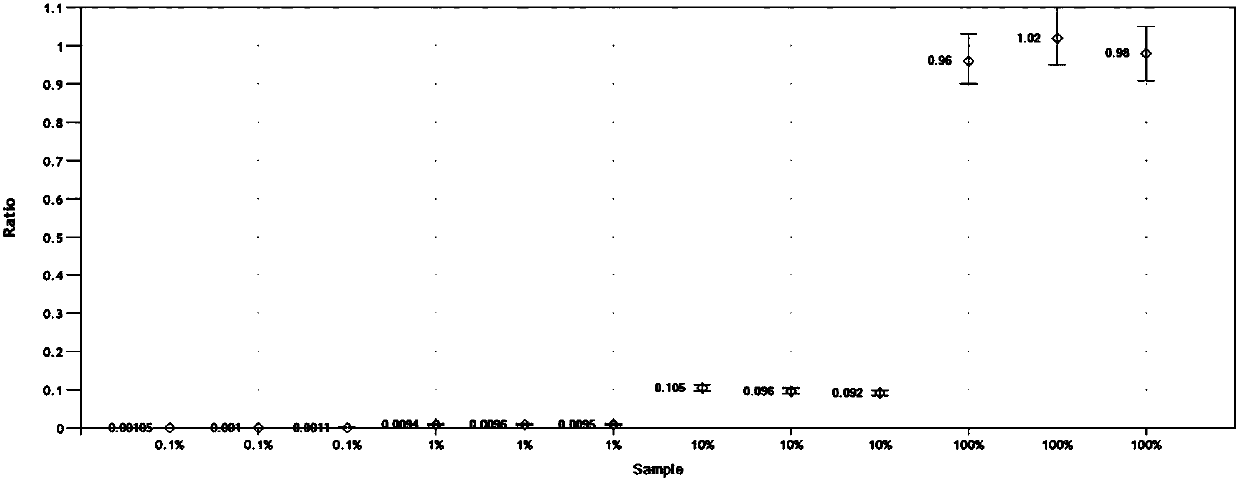Dual digital PCR (Polymerase Chain Reaction) method for quantitatively detecting turkey derived ingredients
A source component, quantitative detection technology, applied in the field of molecular biology detection, can solve problems such as unseen quantitative detection methods
- Summary
- Abstract
- Description
- Claims
- Application Information
AI Technical Summary
Problems solved by technology
Method used
Image
Examples
preparation example Construction
[0065] 1. Preparation of samples and extraction of DNA templates: Take 25-30 g of samples (meat or meat products, etc.) and cut them into pieces, then use a tissue grinder to crush them. The crushing conditions are 1800 rpm for 3 minutes. Weigh 20mg~50mg of the prepared sample into a 1.5mL centrifuge tube, and extract the DNA of the sample using the kit method. Promega, A1120), PSS nucleic acid automatic extractor and other DNA extraction methods.
[0066] 2. Preparation and dispersion of reaction system
[0067] (1) The reaction system of ddPCR digital PCR is:
[0068] The ddPCR (Droplet digital PCR) reaction system is 20 μL, and the components are as follows: 2×ddPCR TM 10 μL of master mix; 0.8 μL of each primer with a concentration of 10 μmol / μL, 0.4 μL of each probe with a concentration of 10 μmol / μL, 2 μL of DNA template, and replenish water to 20 μL.
[0069] Add 20 μL of the reaction system and 70 μL of droplet generation oil into the droplet generation card slot, co...
Embodiment 1
[0102] Example 1 Verification of the relative qualitative detection limit of the copy number concentration of turkey-derived components
[0103] Samples for testing: using genomic DNA of pigs, cattle, sheep, and chickens as substrates, turkey genomic DNA is mixed according to the copy number percentage to form a test DNA sample whose copy number percentage of turkey genomic DNA is 0.01%. Three parallel ddPCR and cdPCR experiments were carried out, and the obtained data are shown in figure 1 and figure 2 . The results showed that both ddPCR and cdPCR could be detected when the content of turkey-derived components was 0.01%.
Embodiment 2
[0104] Example 2 Verification of the relative quantitative detection limit of the copy number concentration of turkey-derived components
[0105] Samples to be tested: In order to verify the quantitative detection limit of this method, pig, cattle, sheep, and chicken genomic DNA were used as substrates, and turkey genomes with copy number percentages of 0.1%, 1%, 10%, and 100% were incorporated into them DNA. Three parallel ddPCR and cdPCR experiments were carried out respectively, and the obtained experimental results are shown in image 3 and Figure 4 .
[0106] For the turkey genomic DNA samples whose copy number percentages were 0.1%, 1%, 10% and 100%, the detection results on the ddPCR platform were 0.100%, 1.016%, 10.60% and 95.35%, respectively, between the three parallel The RSD value was between 1.11% and 12.88%, and the recovery rate was between 95.35% and 100.2%; the detection results on the cdPCR platform were 0.100%, 0.972%, 10.43% and 96.09%, respectively, an...
PUM
 Login to View More
Login to View More Abstract
Description
Claims
Application Information
 Login to View More
Login to View More - R&D
- Intellectual Property
- Life Sciences
- Materials
- Tech Scout
- Unparalleled Data Quality
- Higher Quality Content
- 60% Fewer Hallucinations
Browse by: Latest US Patents, China's latest patents, Technical Efficacy Thesaurus, Application Domain, Technology Topic, Popular Technical Reports.
© 2025 PatSnap. All rights reserved.Legal|Privacy policy|Modern Slavery Act Transparency Statement|Sitemap|About US| Contact US: help@patsnap.com



